How to Stop My Dog From Eating Sticks? Effective Solutions Explained
Dogs are curious creatures, and sometimes their inquisitive nature leads them to nibble on things they shouldn’t – like sticks. This can be a dangerous habit, as it might cause your furry friend to choke, damage their teeth, or even develop intestinal blockages. If you’re concerned about your dog’s penchant for eating sticks, it’s essential to get to the root of the problem and understand what’s driving this behavior.
Many dogs chew on sticks because they’re bored, anxious, or simply enjoy the taste and texture. Addressing your dog’s underlying needs is the first step toward a stick-free life. For example, ensure your pup is getting enough mental stimulation and physical activity.
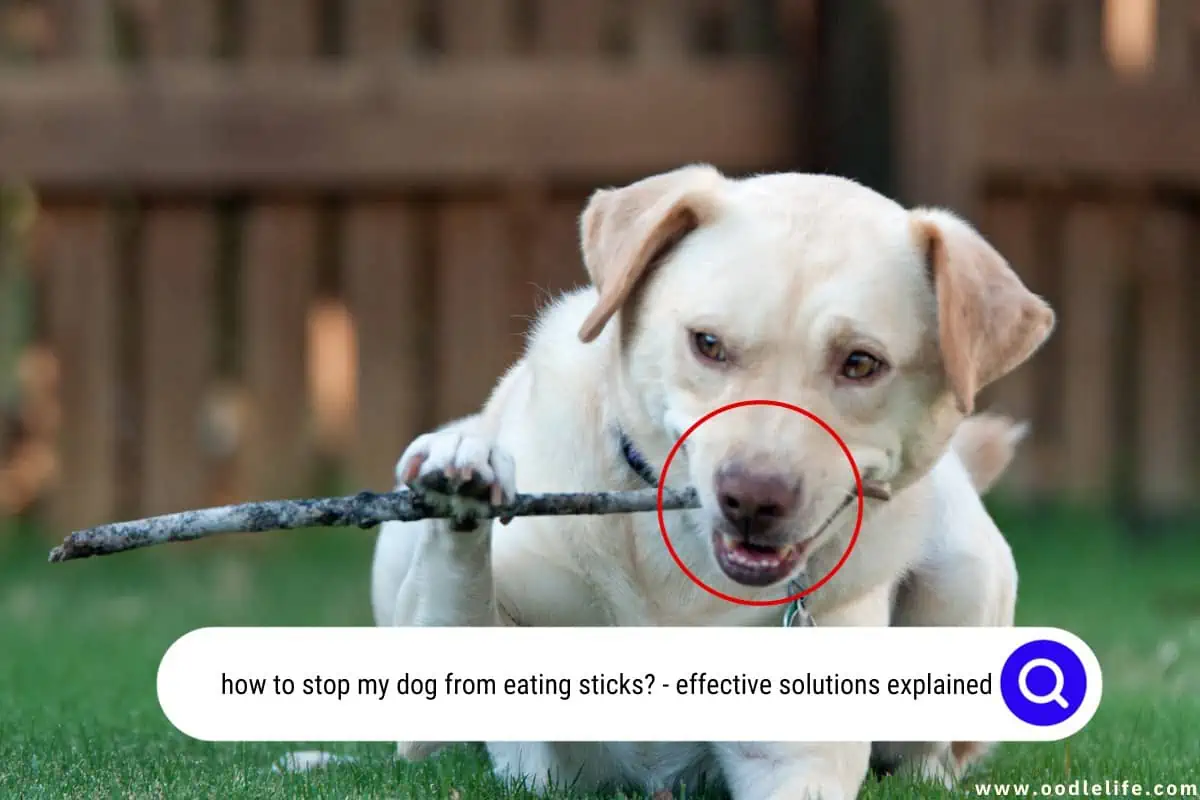
Engage them in play, go for long walks, or offer them durable chew toys designed specifically for dogs. By providing alternatives that satisfy their natural instinct to chew, you’re guiding their focus away from sticks and toward healthier options.
Another preventative measure involves training your dog to better respond to commands. Teaching your pet the “leave it” and “drop it” instructions can be very effective in stopping them from chewing on sticks. Rewarding your dog for complying with these commands positively reinforces the desired behavior and gradually diminishes their interest in consuming sticks.
Understanding Why Dogs Eat Sticks
Dogs eating sticks may seem like harmless play, but sometimes, this habit can lead to potential health risks, such as intestinal blockages or injuries to the mouth. To prevent your dog from eating sticks, it’s essential to understand the reasons behind this behavior.
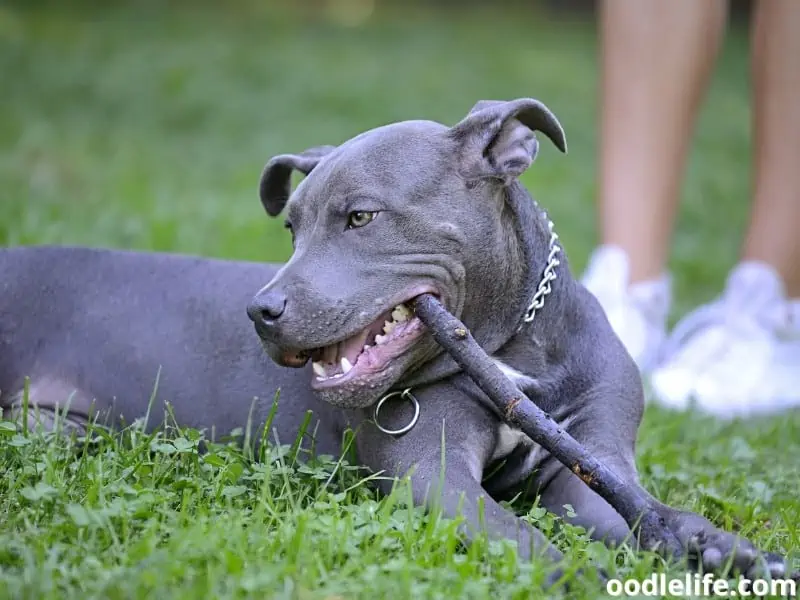
One reason dogs chew on sticks is because they’re teething. Similar to human babies, puppies go through a teething phase where chewing helps alleviate the discomfort of their new teeth coming in. If your puppy is in this stage, offer appropriate chew toys to help redirect this natural urge away from sticks.
Additionally, some dogs may chew on sticks out of boredom. To counter this, it’s important to provide your dog with mental and physical stimulation. Engage in regular playtime, walks, and activities that keep your dog active and entertained.
By doing so, you can reduce the likelihood of them seeking out sticks to fulfill their need for entertainment.
In some cases, stick chewing could be a sign of underlying behavioral issues, such as anxiety or stress. If you notice that your dog chews on sticks excessively, it’s essential to identify any possible stressors that may be affecting them. This could range from changes in their environment to separation anxiety.
Consult with a veterinarian or professional dog trainer if you suspect that your dog’s stick-chewing habit is anxiety-driven.
Lastly, obsessive stick chewing could be an indication of a dietary deficiency. Your dog may be seeking out sticks as a source of extra nutrients or fiber. Ensure that your dog has a balanced diet, and if you’re unsure, consult your veterinarian for advice on proper nutrition.
By understanding the reasons behind your dog’s stick-chewing habit, you can take the necessary steps to address the issue and keep your furry friend safe and healthy.
Common Risks Associated With Stick Eating
When your dog chews on sticks, there are several potential hazards that you should be aware of. Chewing on sticks can lead to splinters, choking, esophageal injury, intestinal blockages, abscesses, obstructions, and infections. These issues can cause discomfort and serious complications for your furry friend.
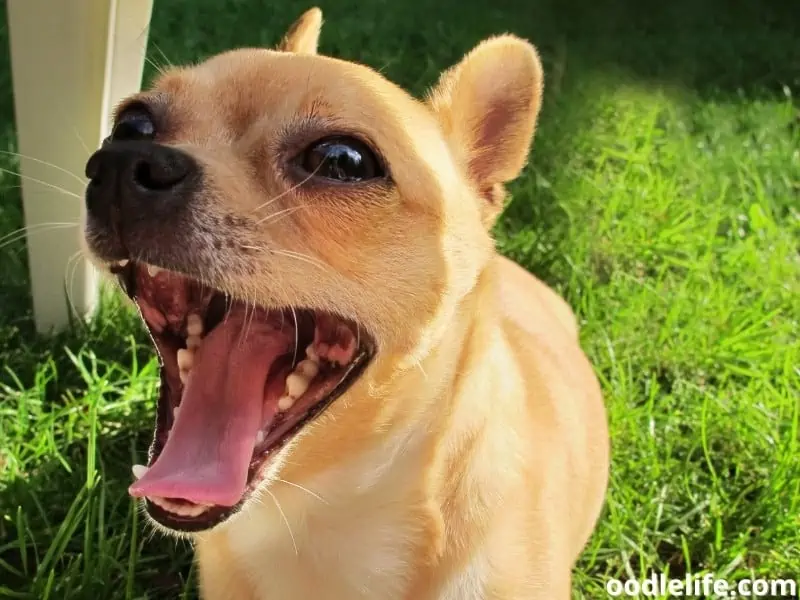
One risk associated with stick chewing is the possibility of splinters. As your dog chews on sticks, small, sharp fragments can break off and become lodged in their gums or mouth. This can cause pain, discomfort, and potential infection.
Choking is another serious concern when it comes to dogs eating sticks. If a piece of the stick gets stuck in their throat, it can obstruct their airway and make it difficult for them to breathe. This is an emergency situation that requires immediate attention.
When a fragment of a stick ends up in your dog’s esophagus, it can lead to injury or puncture. This can be quite painful and will require veterinary intervention to remove the foreign object and treat any damage.
Intestinal blockages and obstructions are another potential consequence of stick eating. If a piece of a stick makes its way into your dog’s intestines, it can get lodged and cause a blockage. This can lead to severe discomfort, vomiting, and even require surgery to correct.
Abscesses and infections can occur when splinters or fragments of sticks become lodged in your dog’s tissues. These can lead to the formation of pus-filled pockets and necessitate medical treatment to prevent further complications.
In conclusion, stick eating can pose various risks to your dog’s health. Being aware of these potential hazards can help you take preventive measures and ensure your dog’s safety and well-being.
Identifying Underlying Health Conditions
Sometimes dogs eat sticks due to underlying health conditions. It’s crucial to be aware of potential medical issues that might trigger this behavior.
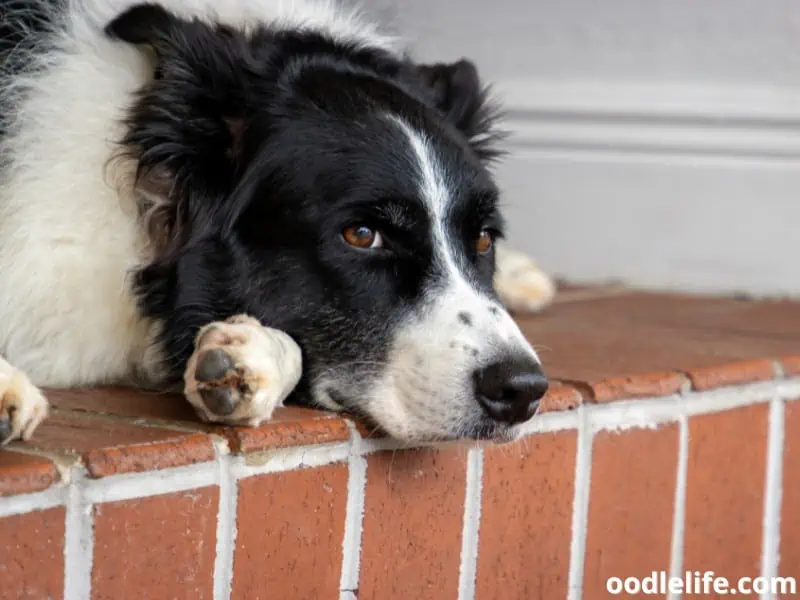
Pica is a condition where animals, including dogs, eat non-food items. Your dog might be suffering from pica if they regularly consume sticks. Pica can be caused by anxiety, stress, hunger, or even nutritional deficiencies.
Dogs with anxiety or stress might chew on sticks as a coping mechanism. Keep an eye on your dog for other signs of anxiety, such as excessive panting, whining, or pacing. If you suspect anxiety is the cause, consider consulting a veterinarian or a certified dog behaviorist.
In some cases, your dog might chew on sticks due to hunger or nutritional deficiencies. Eating sticks could be a sign that your dog is lacking essential minerals or vitamins in their diet. Consulting your veterinarian for a proper diet plan can address this issue.
Mineral deficiencies or anemia can also cause dogs to crave non-food items. Anemia, for example, can result from iron deficiency, leading your dog to seek alternative sources of minerals they might be lacking. If you notice other symptoms such as pale gums or lethargy, bring your dog to the veterinarian for a check-up.
Dental issues can cause your dog to chew on sticks as well. Sticks might provide temporary relief for discomfort caused by toothaches, broken teeth, or even tumors in the mouth. Check your dog’s mouth regularly for signs of dental problems, and schedule yearly dental cleanings with your veterinarian.
Finally, there might be other underlying health conditions that lead your dog to eat sticks. If you eliminate other possibilities but your dog still consumes sticks, consult your veterinarian for a thorough examination.
In conclusion, identifying underlying health conditions is essential to address your dog’s stick-eating behavior. Keep a close eye on your dog and consult your veterinarian, if needed, to provide the best care for your furry friend.
Recognizing Symptoms of Intestinal Blockage
Dogs love to chew and explore their surroundings, and sometimes this can lead to them ingesting objects such as sticks. This may cause an intestinal blockage, which is a serious and potentially life-threatening condition. As a responsible pet owner, it’s crucial to recognize the symptoms of intestinal blockage in your dog to act quickly and seek proper care.

One of the earliest signs of intestinal blockage in dogs is vomiting. If your dog is unable to digest the stick it ingested, it may try to force it out through vomiting. This might be accompanied by loss of appetite or dehydration.
If you notice your dog acting disinterested in food, lethargic, or drinking an unusually high amount of water, it’s important to monitor them closely and consult a veterinarian if symptoms persist or worsen.
Another common symptom is abdominal pain. Dogs suffering from intestinal blockage may exhibit signs of pain, such as whining, pacing, or showing reluctance to lie down or move. The abdomen may feel hard or distended when touched.
Additionally, if your pup is experiencing a blockage, it could have difficulty passing stool or gas. A dog with a blockage might strain excessively during defecation or produce small, hard, and dry feces.
Changes in behavior, such as being more lethargic or less playful than usual, can also indicate intestinal issues. This could be due to the pain and discomfort caused by an obstruction in their digestive system, and should be taken seriously. Furthermore, be on the lookout for any abnormal bowel movements, including diarrhea, which can sometimes be an early sign of blockage.
If your dog displays any of these symptoms, especially if you know or suspect they’ve been chewing on sticks, it’s essential to consult a veterinarian promptly. They will be able to conduct a thorough examination, offer appropriate treatment, and help prevent any further complications from intestinal blockage.
Choosing Safe Alternatives to Sticks
When it comes to keeping your dog entertained and satisfied, it’s essential to provide them with safe and suitable alternatives to chewing on sticks. Sticks might seem like a natural choice for a dog to chew on, but they can pose some serious dangers, such as splintering and causing injuries in your dog’s mouth, throat, and digestive system.
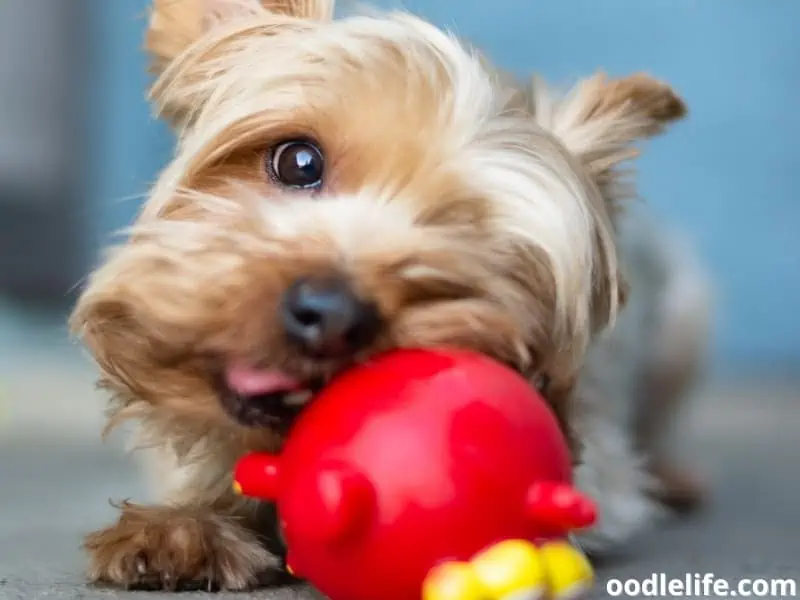
Chew Toys: One great option for redirecting your dog’s attention from sticks to something safer is to provide them with various chew toys. These toys are specifically designed to withstand a dog’s powerful bite and encourage healthy chewing habits. You can find a wide range of chew toys in pet stores and online that cater to different sizes, ages, and chewing preferences of dogs.
To keep your dog interested, try rotating the chew toys every few days. This will not only provide your dog with a sense of novelty but also help to discourage them from seeking out sticks to chew on instead. Some examples of popular chew toys include rubber toys, sturdy rope toys, and even treat-dispensing toys, which can keep your dog entertained for extended periods.
Dog Toys: In addition to chew toys, providing your dog with a variety of other engaging toys can also help deter them from chewing on sticks. Toys that encourage play, such as balls, tug toys, or interactive puzzle toys, can be excellent alternatives for keeping your dog entertained and mentally stimulated.
By offering these toys during playtime, you help your dog associate positive experiences and satisfying outlets for their energy, making it less likely that they will resort to chewing on sticks when bored or needing stimulation.
Acorns as a Caution: While searching for safe alternatives to sticks for your dog to chew on, it’s essential to remember that not all natural objects are safe, either. For example, acorns can also pose a hazard to dogs if ingested. They contain a compound called tannin, which can be toxic to dogs and cause kidney damage, vomiting, or diarrhea if consumed in large quantities.
So, when providing alternatives to sticks, consider steering clear of acorns and other potentially harmful natural objects. Stick to designated dog toys and chew toys specifically designed for safe chewing and playtime to ensure your dog’s safety and well-being.
Effective Training Methods
Training your dog to stop eating sticks requires patience and consistent reinforcement. There are several methods to help your dog develop this habit, starting with the “leave it” command. This helps teach your dog self-control and boundary setting.
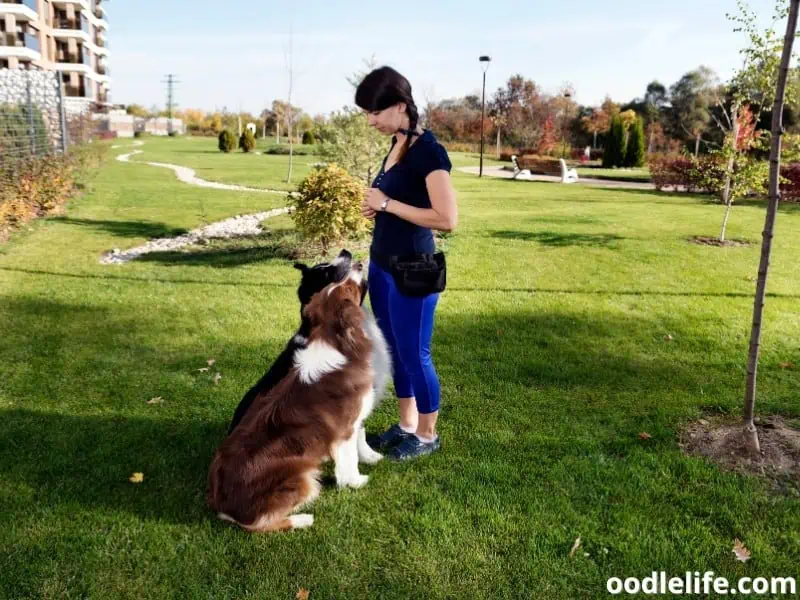
Begin by holding a treat in your hand and extending it towards your dog. When they reach for it, close your hand and say “leave it.” Once your dog stops attempting to get the treat, reward them with praise and a different treat.
Gradually increase the difficulty by placing the treat on the ground while still using the “leave it” command. With practice, your dog will associate the command with refraining from taking something they shouldn’t.
Another valuable command for this situation is the “drop it” command. Start by giving your dog a toy that they can hold in their mouth. Approach them with a treat while saying “drop it.”
Your dog should release the toy in favor of the treat. Praise your dog when they successfully release the toy, and reinforce this behavior by practicing it regularly.
When your dog has mastered both “leave it” and “drop it” commands, begin applying them to situations involving sticks. Remember to stay consistent with your training and always use positive reinforcement. This will create a strong bond and help your dog understand that obeying your commands leads to rewards.
Lastly, a proactive method to prevent stick-chewing is providing your dog with appropriate alternatives to sticks, like chew toys or bones. By doing so, you are redirecting your dog’s attention to something more suitable for chewing while still satisfying their natural instincts.
In conclusion, combining these effective training methods, ensuring positive reinforcement, and providing appropriate chew toys can significantly help discourage your dog from eating sticks. Remember to be patient and persistent with your training, as this will ultimately lead to a well-behaved and happier dog.
Dealing with Nutritional Deficiencies
If your dog is persistently eating sticks, they might be suffering from a nutritional deficiency. To address this issue, it’s essential to ensure they are receiving a balanced diet that provides all the necessary vitamins, minerals, iron, and other nutrients they need.
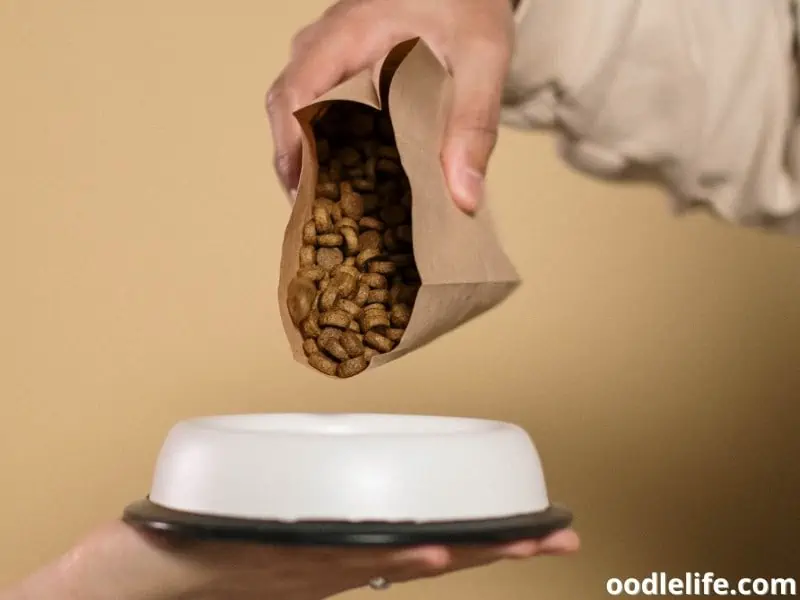
Start by evaluating the dog food you’re providing. Commercial dog foods should meet the guidelines set by the Association of American Feed Control Officials (AAFCO). Look for a statement on the packaging confirming it meets these requirements.
If not, consider switching to a higher quality dog food that is specifically formulated for your dog’s life stage—puppy, adult, or senior.
Inspect the list of ingredients in your dog food. Food with whole proteins (e.g., chicken, beef, or fish) as the first ingredient are generally better for your dog’s health. Additionally, pay attention to additives and fillers used in some dog foods.
These ingredients can cause health problems in dogs and contribute to nutritional deficiencies.
To supplement your dog’s diet, consider providing natural sources of vitamins, minerals, and iron. This can include:
- Leafy greens: Kale, spinach, and collard greens are rich in vitamins and minerals, such as iron and calcium.
- Fruits: Incorporate apples, blueberries, and cranberries as treats for your dog. They contain antioxidants and essential nutrients.
- Fish: Rich in omega-3 fatty acids, sardines and salmon can improve your dog’s coat and skin health, as well as support their immune system.
Remember to consult your veterinarian before adding new foods to your dog’s diet. They can offer personalized recommendations based on your dog’s breed, age, weight, and overall health. By providing a diet rich in essential nutrients, you can help curb your dog’s urge to chew on sticks and prevent potential health problems associated with nutritional deficiencies.
How to Prevent Your Dog From Eating Sticks?
Dogs are naturally inclined to chew on sticks, but it’s essential to stop this behavior for their safety. Here are some practical steps you can take to prevent your dog from eating sticks.
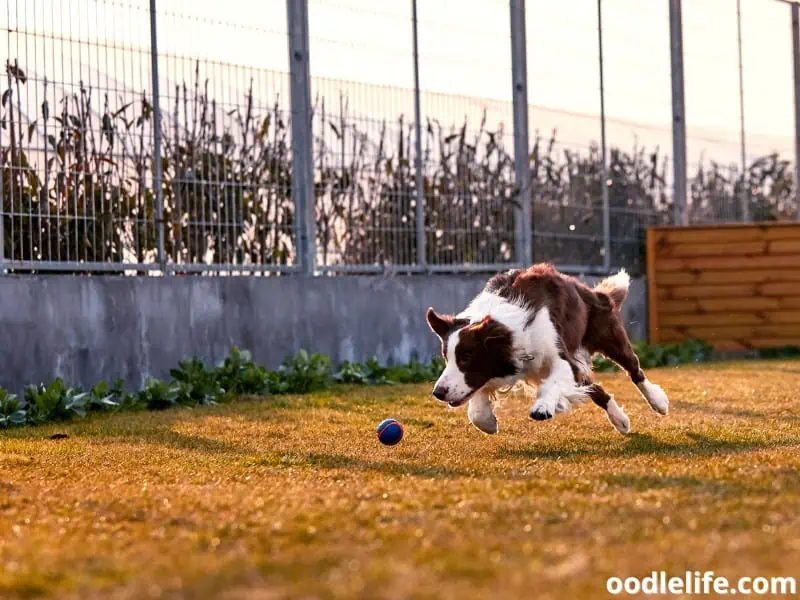
1. Provide alternative chew toys and treats. Providing your dog with appropriate chew toys and treats can help satisfy their need to chew. Durable rubber toys, flavored dental cleanings, and puzzle toys filled with snacks can all be effective alternatives to sticks.
2. Keep your backyard clean and stick-free. Regularly clean up your backyard and remove fallen branches, twigs, and sticks to minimize temptation. By doing this, you’re also creating a safer outdoor environment for your dog to play in.
3. Engage in daily exercise and playtime. Make sure your dog gets enough physical exercise and mental stimulation to keep them occupied and entertained. Regular walks, playtime with toys, and interactive activities can help redirect their energy and attention away from chewing sticks.
4. Use positive reinforcement for good behavior. Every time your dog chooses their chew toy over a stick, praise them enthusiastically and offer a small treat as a reward. By doing this, you’re reinforcing their decision to stay away from sticks and choose a safer alternative.
5. Maintain control during outdoor walks. Keep your dog on a leash during walks so you can guide them away from sticks and prevent them from indulging in this dangerous habit. Additionally, incorporating obedience training commands like “leave it” or “drop it” can help teach your dog to let go of sticks when necessary.
6. Consider using a basket muzzle. If your dog is persistent about eating sticks, using a basket muzzle while outdoors can be a useful preventive measure. This type of muzzle allows your dog to breathe, pant, and drink but prevents them from picking up sticks or other harmful objects.
In conclusion, preventing your dog from eating sticks involves a combination of providing alternatives, maintaining a clean environment, engaging in regular exercise and playtime, and using positive reinforcement to encourage good behavior. By following these steps, you can protect your dog from the potential dangers associated with this habit.
When to Seek Veterinary Assistance?
As a loving pet owner, it’s essential to recognize when your dog’s stick-chewing habit could potentially cause a medical problem.
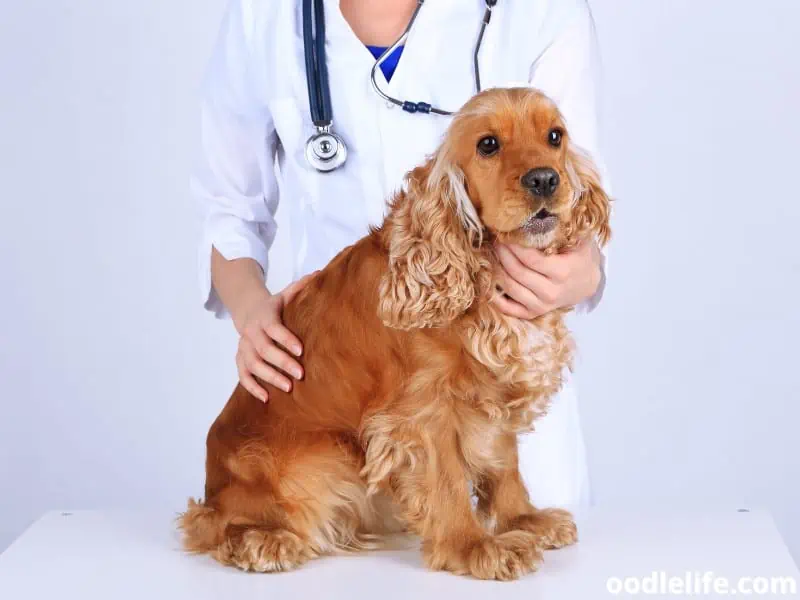
There are a few situations when it’s crucial to seek veterinary assistance to address this issue:
1. Ingested sticks: If you suspect that your dog has swallowed a piece of stick, you should contact your veterinarian immediately. Signs of ingestion include vomiting, drooling, discomfort, and a loss of appetite. Sticks can cause internal injuries, intestinal blockage, or infection, and your veterinarian will be able to provide the appropriate care and medication if necessary.
2. Persistent chewing: While it’s common for dogs to chew on sticks occasionally, excessive or compulsive chewing could indicate an underlying problem like dental issues or anxiety. Consult your veterinarian to rule out any medical conditions and help you find a healthy solution for curbing your dog’s chewing habit.
3. Splinters and cuts: Chewing on sticks may lead to splinters and cuts inside your dog’s mouth or even paw injuries from stepping on sharp fragments. If you notice bleeding or signs of pain, don’t hesitate to get in touch with your veterinarian for an assessment and proper care.
Remember, prevention is the key to avoid these potential hazards. By providing your dog with alternative chewing options and keeping a close eye on their habits, you can safeguard their well-being while enjoying your time together outdoors. However, when in doubt, trust your instincts and consult your veterinarian – their expertise is invaluable when it comes to your dog’s health and safety.